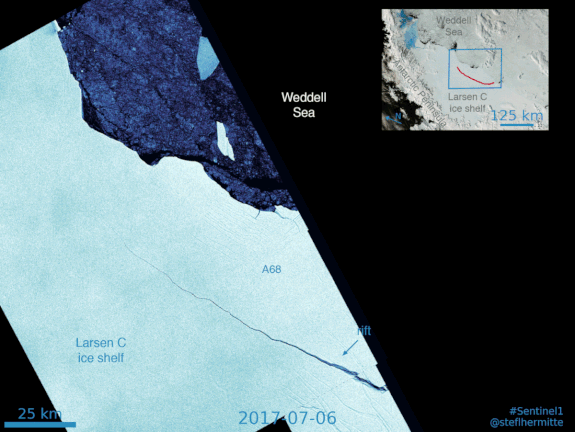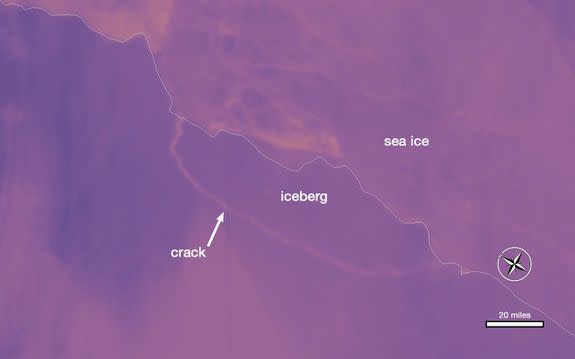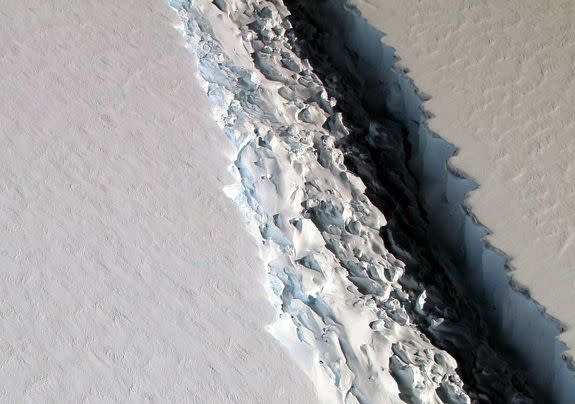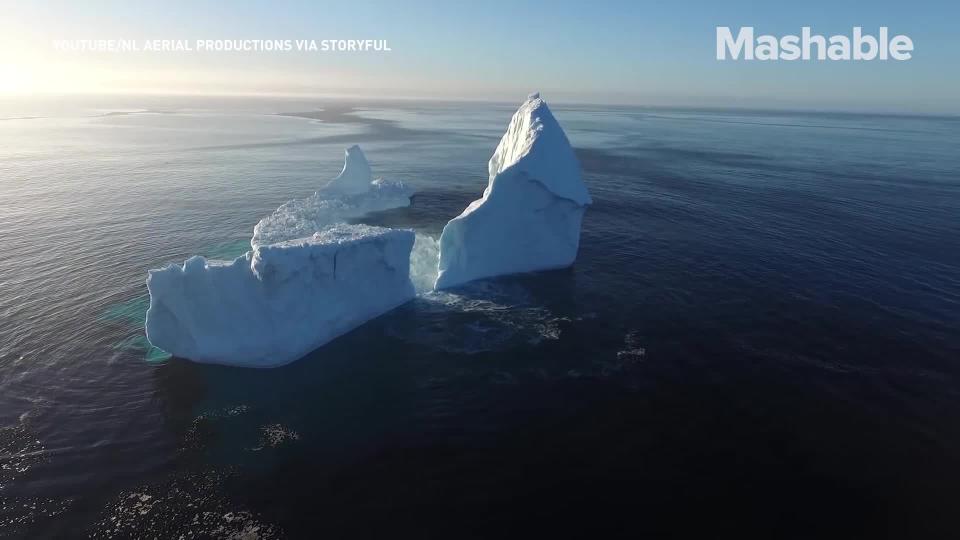The 7 best views of the Larsen C iceberg breaking off Antarctica


A giant iceberg breaking off Antarctica is a disconcerting sight, but it's also fascinating to watch.
One of the largest icebergs ever recorded finally broke free from the Larsen C Ice Shelf in northwest Antarctica, U.S. and European agencies monitoring the region confirmed on Wednesday.
The 2,200-square-mile block is about the size of Delaware (or twice the size of Luxembourg) and contains a volume of ice twice the size of Lake Erie.
SEE ALSO: One of the largest icebergs ever recorded just broke free of Antarctica
The iceberg won't directly add to sea level rise, since it has already been floating in the water like an ice cube in a glass. But it may have significant future consequences.
Floating ice shelves act like doorstops to the land-based glaciers behind them. As chunks of the ice shelves break away — as this iceberg did — it can weaken the shelves, eventually causing their collapse. This would allow glaciers to move faster into the sea, adding new water to the ocean and raising sea levels.
For now, however, here are some of the best views of Larsen C iceberg splitting off:
From 6 July to 12 July, #Sentinel1 caught the final days and eventual full break-off of the berg. #LarsenC pic.twitter.com/2kVVjx4Syk
— ESA EarthObservation (@ESA_EO) July 12, 2017

Image: STEF LHERMITTE

Image: NASA WORLDVIEW
The @nytimes on the #LarsenC monitoring with @CopernicusEU #Sentinel1 data https://t.co/F5mJ64sSSF pic.twitter.com/rFQpc3atne
— ESA EarthObservation (@ESA_EO) July 12, 2017
Blog post with more details about the Larsen C iceberg calving: https://t.co/B094vfbTE6 pic.twitter.com/9ta8XGTMDN
— Project MIDAS (@MIDASOnIce) July 12, 2017

Image: ESA

Image: NASA
While this iceberg alone won't have a devastating effect, and the ultimate fate of Larsen C is far from known, it does point to the alarming possibility that Larsen C and other ice shelves could collapse in response to human-caused global warming.
The Antarctic Peninsula has already experienced southward-moving ice shelf collapses in recent years.

Image: climate signals
"This is the big story that people need to think about. What we are seeing right now ... is part of a story where the sources of sea level awakened by climate warming get bigger and bigger with time," Eric Rignot, a professor of Earth System Science at University of California at Irvine and a researcher at NASA's Jet Propulsion Laboratory, recently told Mashable Science Editor Andrew Freedman.
WATCH: Giant icebergs are a big tourist draw in Newfoundland, and a warning sign


